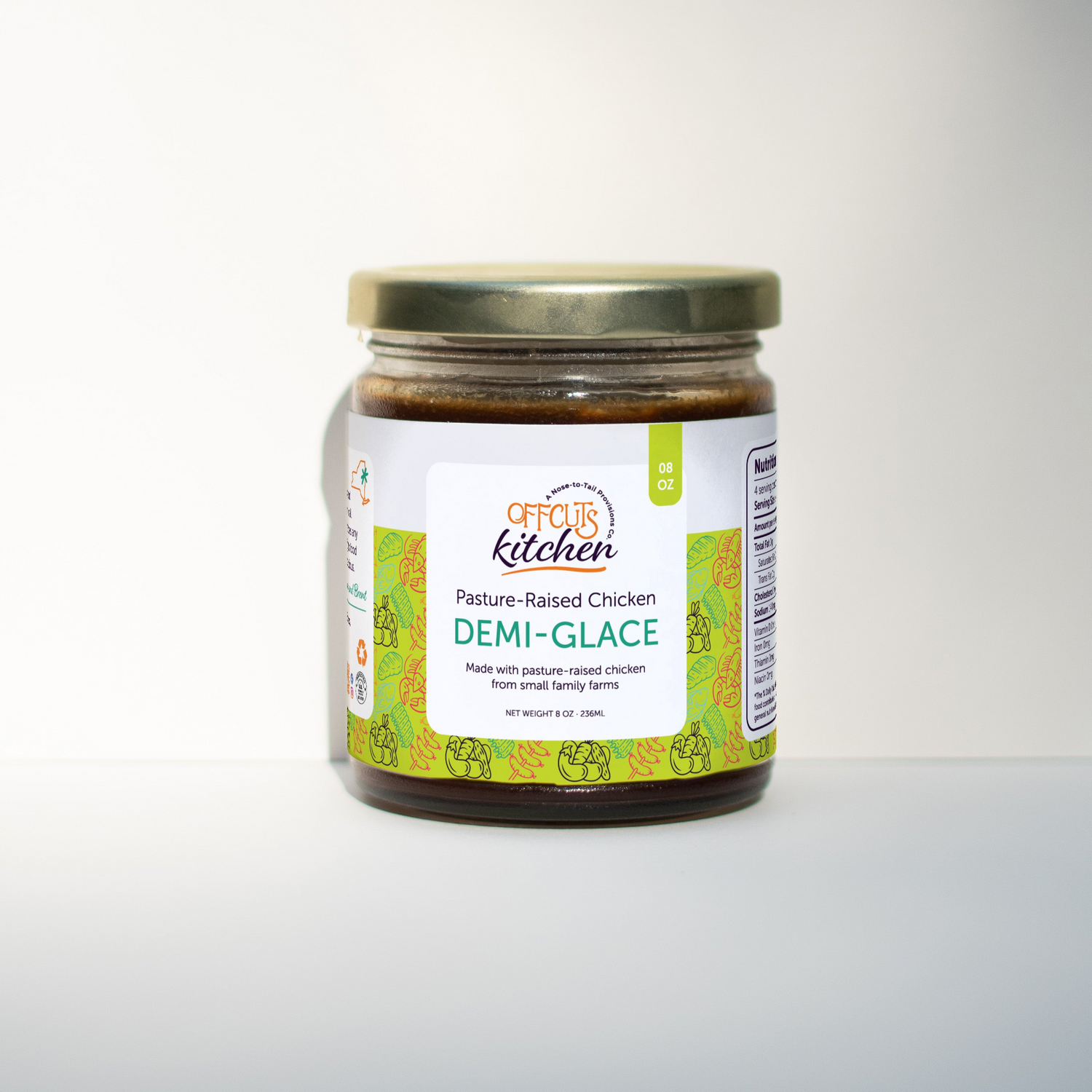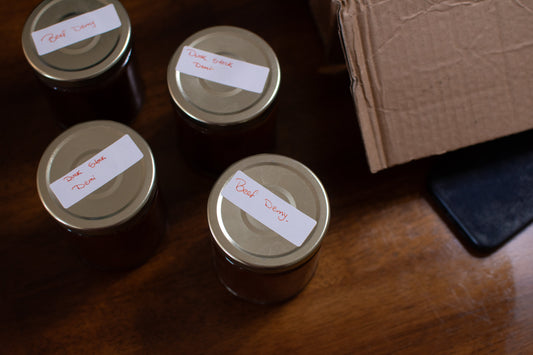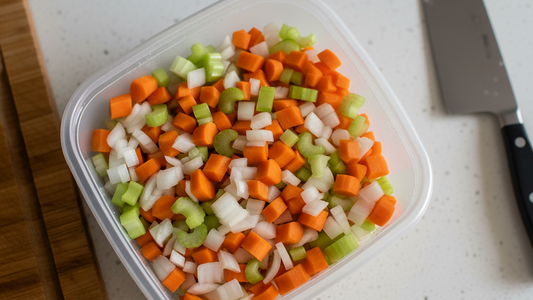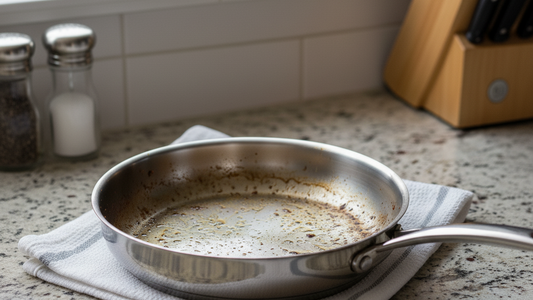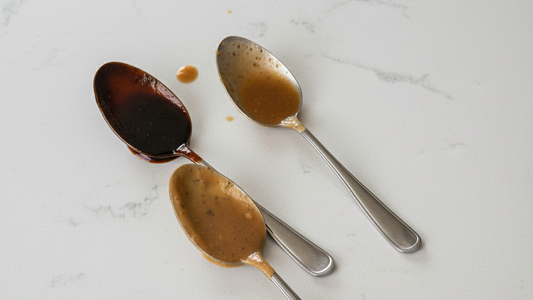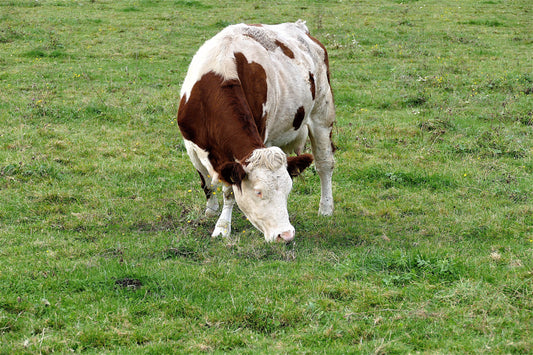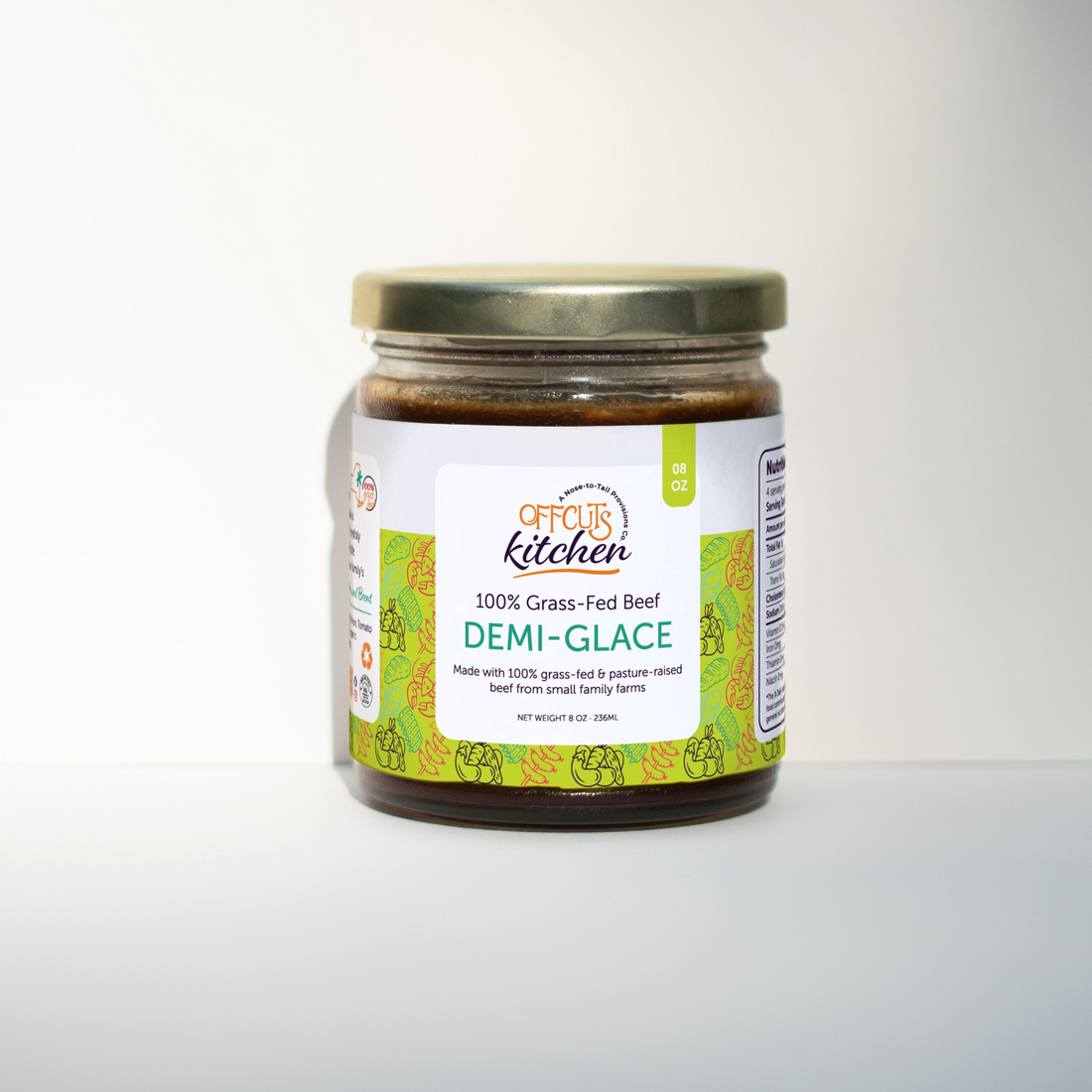
What is Demi-Glace?
Share
This is one we get from friends and family pretty often: what is demi-glace anyways?
Short answer: it is the purest expression of roasted bones and aromatics, concentrated until it turns glossy, gelatin-rich, and intensely savory.
An even simpler answer? Think of it as thicker and richer bone broth with added aromatics that can be added to sauces or highlighted on its own.
And the full answer: demi-glace is a classic of French cuisine with a history that shaped how restaurants cook and serve food. Here is what it is, where it came from, how it evolved, and where you can see it today.
Where Demi-Glace Came From
We can trace demi-glace to 19th century France, when French haute cuisine began to codify sauces. Carême pioneered the codification of these sauces, naming Espagnole, the precursor to demi-glace, as one of the original 4 mother sauces. If you are not familiar, Espanole is a brown stock thickened with a roux. Auguste Escoffier then fixed Espagnole among an expanded list of 5 mother sauces. He further defined demi-glace as a half reduction built from Espagnole and brown stock.
At the same period in the 1800s, French dining trends shifted to service à la russe, where courses arrived one after another. That change, along with the rise of grand hotels, demanded a faster, more organized kitchen. Escoffier’s response was building the brigade system, which paired functional specialists with specific stations. The saucier became the keeper of stocks, reductions, and sauces, and demi-glace sat at the center of that role.
Classical haute cuisine prized depth, clarity, and consistency. For the saucier and their demi-glace, that meant starting by simmering stocks for hours. Sauces were strained, reduced, and refined until they coated a spoon with a fine glaze. Demi-glace fit that ideal, which is why it became the base for a family of meat sauces served in sequence through formal meals.
What Demi-Glace Is
At heart, demi-glace is a strong brown stock reduced to a concentrated, spoon-coating consistency. Traditional textbooks describe two paths to get there:
- Classical method: build espagnole (a brown sauce thickened with a roux), mix it with brown stock, then reduce by half.
- Modern method: skip the roux, start with an excellent roasted-bone stock, and reduce until natural gelatin gives the sauce body.
Either way, the defining traits are the same: roasted bone flavor, balance from wine and aromatics, deep brown color, and a natural, gelatin-driven sheen. It is not gravy. Gravy is typically thickened with flour or starch. Demi-glace gets texture from collagen that cooks out of bones and sets as gelatin.
How It Evolved
As restaurants moved toward lighter cooking in the late twentieth century, heavy flour-based sauces stepped back. Many kitchens now leave the flour out and rely on reduction, butter, or cream for finish. You will also see jus lié, a quick, lightly thickened reduction, used when service needs speed and a lighter feel. The through line stays the same: great stock and careful reduction.
Where You Will See It Today
In restaurants: on steak au poivre, bordelaise, and red wine pan sauces, built from a house brown stock or a prepared demi-glace.
In specialty retail: refined demi-glace is sold ready to use for cooks who want restaurant-level results at home.
In Japanese yōshoku cooking: dishes like Hayashi Rice use a demi-glace–style sauce for a silky, savory stew over rice.
What Goes Into Demi-Glace
- Bones with collagen: beef, veal, or chicken, roasted for deep flavor. Joints, knuckles, and feet are prized because they add gelatin for body.
- Aromatics: onion, carrot, celery, garlic, leeks, tomato paste, herbs, and peppercorns.
- Wine: often red wine for complexity and balance.
- Time and reduction: long, gentle simmering for stock, then steady reduction to create that natural, glossy nap.
How We Make It at Offcuts Kitchen
Our demi-glace makes a different choice than the old textbooks. We do not add espagnole or flour. We highlight the ingredients by relying on collagen to thicken naturally. That decision gives you:
- Purer flavor: no flour veil. You taste roasted bones, wine, and aromatics with nothing in the way.
- Better performance: reduces cleanly, mounts with butter, and finishes sauces without getting pasty.
-
Ingredient transparency: a short label focused on bones and vegetables.
Meet our lineup:
FAQ
Is demi-glace the same as gravy?
No. Gravy is usually thickened with flour or starch. Demi-glace is thickened naturally through reduction and gelatin.
Do you need flour to make demi-glace?
No. Classical demi uses a flour-based espagnole, but a modern reduction-only approach delivers a cleaner flavor. That is the method we use.
What is the difference between demi-glace and glace de viande?
Glace de viande is a deeper concentration beyond demi-glace, more syrupy and used in small amounts to fortify a sauce.
Is chicken demi-glace a thing?
Yes. We make a Pasture Raised Chicken Demi-Glace that follows the same collagen-first approach for body and sheen. Clean label. Glossy finish.
What about jus lié?
It is a quick, lightly thickened reduction. Many modern kitchens use it when they want a lighter feel and fast service. We still reach for demi-glace when we want maximum depth and a polished finish.
Related Reading
Sources & Further Reading
- Encyclopaedia Britannica — Demi-glace: https://www.britannica.com/topic/demi-glace
- Encyclopaedia Britannica — Nouvelle cuisine: https://www.britannica.com/topic/nouvelle-cuisine
- Encyclopaedia Britannica — Gastronomy (service à la russe): https://www.britannica.com/topic/gastronomy
- Le Cordon Bleu — What is the kitchen brigade system: https://www.cordonbleu.edu/news/what-is-the-kitchen-brigade-system/en
- The Culinary Pro — Techniques for small sauces (demi-glace and jus lié): https://www.theculinarypro.com/3-techniques-for-preparing-french-small-sauces
- Serious Eats — Pressure cooker stock and gelatin body: https://www.seriouseats.com/pressure-cooker-beef-stock
- Just One Cookbook — Hayashi Rice (yōshoku with demi-glace): https://www.justonecookbook.com/hayashi-rice/
